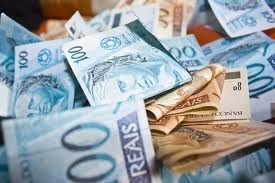
Colombia, officially known as the Republic of Colombia is situated in the north–west region of South America. It is the only country in the world which has coasts on both, the Caribbean Sea as well as the Pacific Ocean. There are more than 300 beaches in Columbia, out of which, some have all the tourist services whereas some of them are natural and calm paradises away from the hustle-bustle of the crowd. Being a part of Latin America, Colombia has a historical and cultural heritage and a great cuisine. In addition to having modern cities, colonial charm and a vibrant culture, the nation boasts of spectacular natural beauty –the Andes, Amazon rainforest, beautiful coastlines and the La Guajira desert and an incredible biodiversity. Let us learn more about this beautiful country.
Colombia is located in northern part of South America, bordering the Caribbean Sea and the North Pacific Ocean. It borders Brazil (1,790 km), Ecuador (708 km), Panama (339 km), Peru (1,494 km) and Venezuela (2,341 km) and lies between the geographic coordinates 4°N latitude and 72°W longitude. It covers a total area of 1,138,910 sq. km, out of which, land occupies about 1,038,700 sq. km and area occupied by water is about 100,210 sq. km. Stretching a coastline of about 3,208 km (Caribbean Sea–1,760 km and North Pacific Ocean–1,448 km), it is slightly less than twice the size of Texas and comparatively ranks 26th in the world.
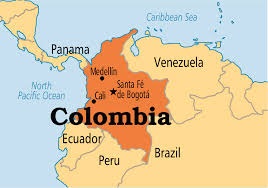
Along with the tropical climate along its coast and the eastern plains, the weather is relatively cooler in the highlands. Its terrain is flat, coastal lowlands, the central highlands and the high Andes Mountains while the lowland plains in the east are called ‘Llanos’. The lowest point of elevation is the Pacific Ocean at 0 m whereas the highest point is at Pico Cristobal Colon at 5,775 m. Natural resources of Colombia are petroleum, natural gas, coal, iron ore, nickel, gold copper, emeralds and hydropower. The Colombian highlands face natural hazards such as volcanic eruptions, occasional earthquakes and periodic droughts. Deforestation, soil and water quality damage due to excessive use of pesticides and air pollution (vehicular), especially in the capital city of Bogota, are a few environmental issues.
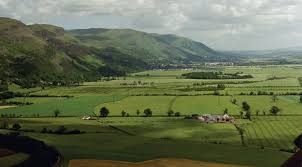
About 10% of the species of fauna of the world is found in Colombia. Bird species such as white–throated toucan, channel–billed toucan, emerald toucan, northern helmeted curassow, Andean cock–of the–rock, oilbird, male rufous–tailed jacamar, giant humming birds, long–billed starthroat, mourning dove, white–crowned pigeon, green jay, tree swallow, blue–gray tanager are found here. Andean condor is the national bird. Mammals such as the rare spectacled bear, Colombian woolly monkey, Colombian black–handed titi and giant armadillo are found here along with amphibians such as frogs, toads and salamanders. In addition to the various species of fish, reptiles such as snakes, crocodiles, tortoise and turtles are part of the fauna. The fauna of Colombia is characterized by the highest number of species found anywhere in the world. Flowering species such as magnolia, peregrine, velvety passion flower, orange passion flower, passiflora coccinea, passiflora picturata and trees like Pekea nut tree, Brazil nut, Yopo tree, mahogany and oak tree are also found in Colombia.
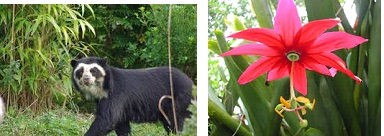
The Colombian society is divided into three classes namely the upper, middle and lower class. Whites form the upper class, Mestizos and Mulattoes constitute the middle and lower class while the Blacks and the Indians are a significant part of the lower class. The Whites, Mestizos and the Mulatto men and women prefer to wear conservative dark suits and follow the US style of clothing. People in the rural areas wear same clothes in the field and at home which is loose fitting pants for men and loose fitting skirts for women. The society is male dominated and the role of women is limited to being a mother and exercise of conjugal rights. In recent times, women from upper and middle class have assumed social and church responsibilities. Arranged marriages are not common but Colombians strive to marry within their own class or higher class. The domestic unit is a nuclear family and sometimes, the upper class may have large families with extended families. Parents encourage their children to behave properly and nurture values of respect and obedience for elders. Social interaction is generally respectful and personal space is highly regarded in all the classes.
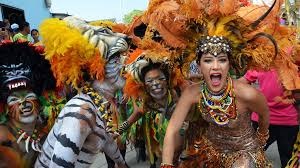
The official language of Colombia is Spanish which was imposed on them during the colonial period whereas English is spoken in major cities by the upper class. In addition to Spanish, more than two hundred dialects are spoken by the locals. About 90% of the population of Colombia is Roman Catholic, followed by some minority groups of Protestants, Muslims and Jews and people from rural areas who follow rural folk religion.
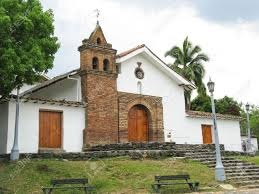
A typical Colombian meal is identified by its size rather than its delicacies. The food culture includes a light breakfast, a substantive lunch and a light meal in early evening. Dinner consists of a main dish with meat or fish cooked with rice or potatoes and accompanied by fresh fruits and a homemade soup. There are regional preferences for food. A hearty breakfast in the rural interior may consist of a strip of pork, rice and beans, sweet plantain and a large steak with fried eggs and dinner may be the same, but without eggs; seafood is preferred in the coastal regions. In Cartagena, the lunch consists of rice with coconut, fried plantains and shrimp. Special dishes are made during holidays and religious ceremonies. A popular dish associated with the capital city of Bogota is ‘ajiaco’ a stew with three types of potato, chicken and corn served with capers, cream and avocado Another dish served during religious holidays is ‘pasteles’ and along the coast, people eat ‘sancocho’ which is a stew of fish or chicken. . Meals end with a very sweet dessert, made from ‘panela’, a type of unrefined whole cane sugar. Colombians consume large quantities of beer and coffee (with no milk) and less of wine. Aguardiente is a popular drink made from local rum and a corn of sugar brandy.
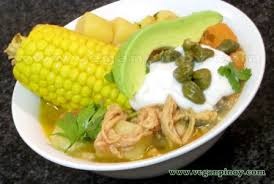
Colombia’s sound economic policies and aggressive promotion of free trade in the recent years have boosted its ability to perform better economically, despite the obstacles such as inadequate infrastructure, inequality, poverty, narco–trafficking and uncertain security. Its agricultural products are coffee, cut flowers, bananas, rice, tobacco, corn, sugarcane, cocoa, oilseeds, vegetables, shrimp and other forests products. Industries which contribute to its development include textiles, food processing, oil, clothing and footwear, beverages, chemicals, cement, gold, coal and emeralds. It exports petroleum, coal, emeralds, coffee, nickel, cut flowers, bananas and apparels to US, China, Panama, India and Spain. It imports industrial equipment, transportation equipment, consumer goods, chemicals, paper products, fuels and electricity from US, China, Mexico and Brazil.
